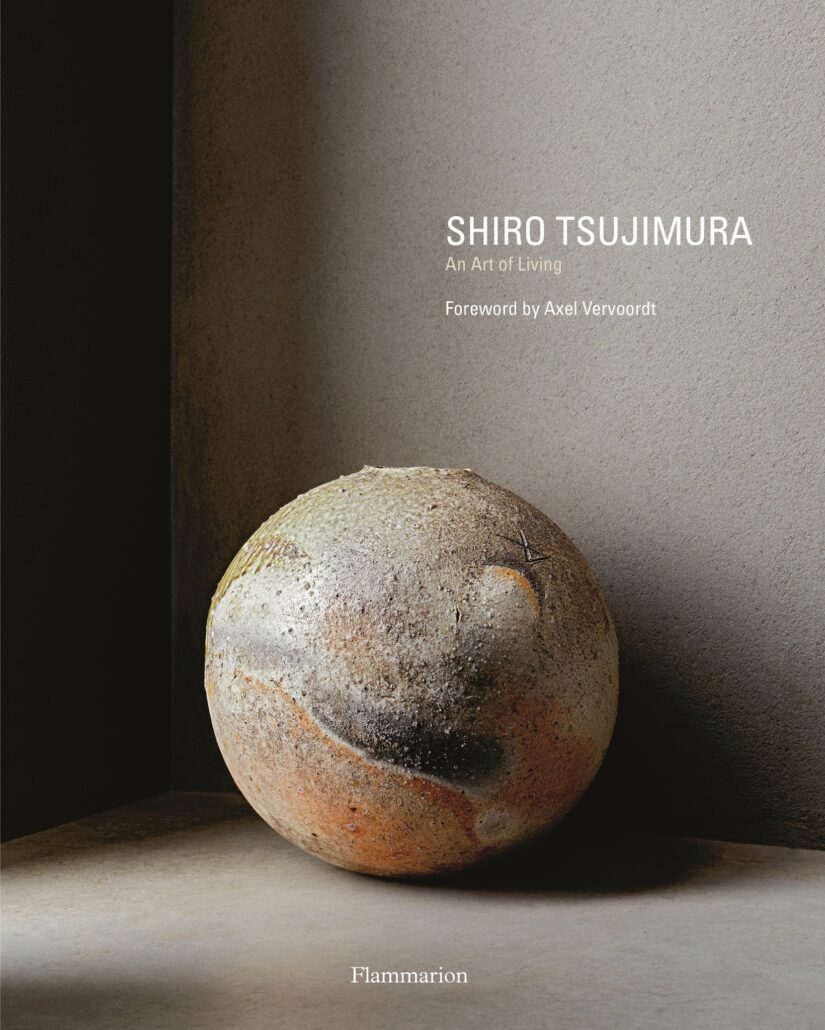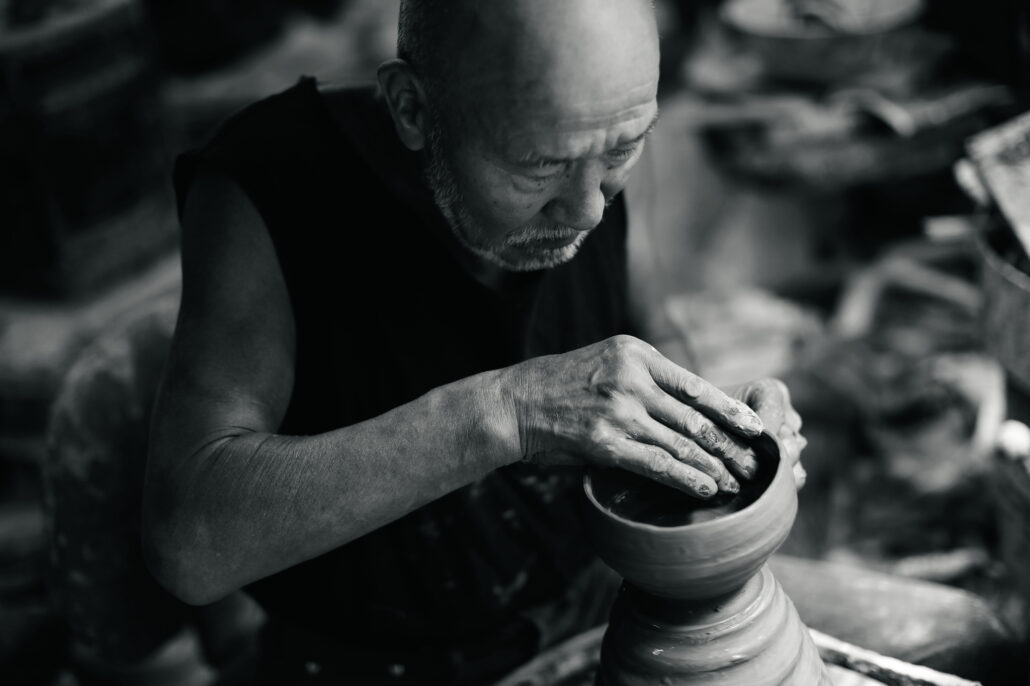- p.43 Courtesy of Sagawa Printing Co. Ltd. from Shiro Tsujimura, Flammarion
What is art? Does something become art when it’s put into the art context; because it’s shown in a museum or a gallery, or becomes art because an artist says so? Marcel Duchamp certainly thought so. But Duchamp statements had a political purpose, they were addressing the politics of art.
The revered Japanese ceramist Shiro Tsujimura has no political purpose. According to his new monograph, published by Flammarion, through the words written by such luminaries of art and design like the Japanese photographer Hiroshi Sugimoto and the Belgian interior and art dealer Axel Vervoordt, Tsujimura is as humble of an artist as they come. But is he an artist at all? Is what he does art? And, finally, does it matter?
Tsujimura has been making ceramics for fifty years. He began humbly, at his home near Nara that he has built with his own hands. He also built the kilns for firing the ceramics, and he gathers the clay on his own around his house. In the beginning he sold his wares in the street near a museum in Kyoto. If Hiroshi Sugimoto did not take a fateful trip to Tsujimara’s house in the ‘80s, and if Axel Vervoordt did not subsequently champion him, would he be considered an artist? How many Tsujimuras are out there in Japan, waiting to be discovered?
I first saw Tsujimura’s earthy vases nine years ago at Vervoordt’s Kanaal gallery on the outskirts of Antwerp, and at his home. They were striking in their imperfection and in their uniqueness. Like the lines on a person’s face that give us our humanity, they had a character of their own. I did not know who Tsujimura was, but I know that I was looking at something special.
The 135 images, spread over 192 pages of the book give a glimpse into a decidedly earthy world of Tsujimura, who still lives and works at the same house in Nara. In his ‘70s now, and as humble as he was when training as a Buddhist monk in his youth, the only luxury Tsujimura affords himself is an old silver Porsche he’s owned forever. Interspersed with the beautiful photos of his ceramic vases, some blown up through overheating in a kiln, are photos of him and his wife cooking, walking, gathering clay, as well as images of Tsujimura working, all by himself, no masters and no apprentices. It is as far from a contemporary image of an artist as one can get.
“As with the mu of zen, there must be the mu of ceramics,” Tsujimura muses in the book, talking about that elusive sense of pure awareness, before the mind interferes. It is this that one experiences, if one is lucky, looking at his ceramics. “Is it art?” is a question besides the point.
- p.22-23 © Shouya Grigg from Shiro Tsujimura, Flammarion
- p.132 © Jan Liégeois for Axel Vervoordt Company from Shiro Tsujimura, Flammarion
- p.47 © Shouya Grigg from Shiro Tsujimura, Flammarion
- p.95 © Laziz Hamani from Shiro Tsujimura, Flammarion
___________________
Shiro Tsujimura ($95), published by Flammarion, out Mar 19th, 2024









